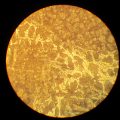Metallographic tests are based on the examination of the natural surfaces or specially prepared metallographic specimens in order to define the structure, assess the quality or identify internal flaws in the material.
We provide:
Examination of a prepared surface of a sample’s cross-section carried out with the naked eye or under low magnification – no more than 30x. Its aim is:
Examination of a prepared surface of a sample’s cross-section conducted with the use of a metallographic microscope which allows studying the sample in the light reflected from its surface at 20 – 1800x magnification. Its aim is:
macroscopic examinationmicroscopic examination
Examination of a prepared surface of a sample’s cross-section carried out with the naked eye or under low magnification – no more than 30x. Its aim is:
- to detect discontinuities in the material such as fractures, overlapping, shrinkage cavities, blisters and non-metallic inclusions
- to assess other parameters of the material such as trace impurities (sulphate or phosphorus), size of grain, depth of hardening, texture direction and nature of fractures
Examination of a prepared surface of a sample’s cross-section conducted with the use of a metallographic microscope which allows studying the sample in the light reflected from its surface at 20 – 1800x magnification. Its aim is:
- to reveal the microstructure of the tested material
- to identify discontinuities of the material which cannot be detected with the naked eye
- to differentiate the structural components and to define their morphology, quantity, dimensions and spacing









